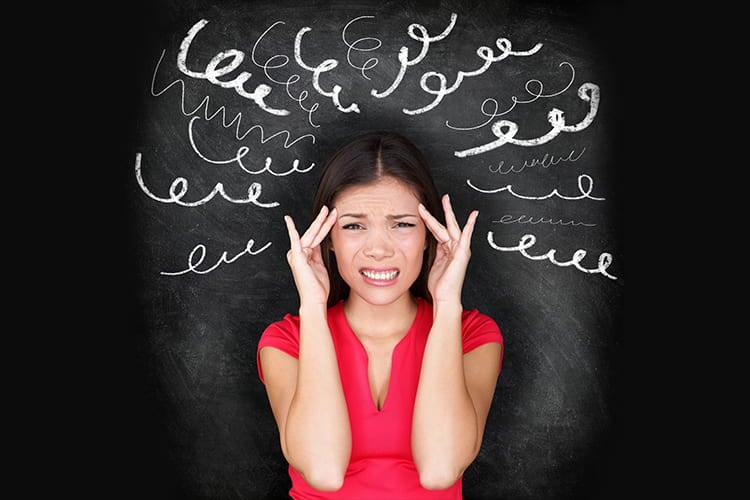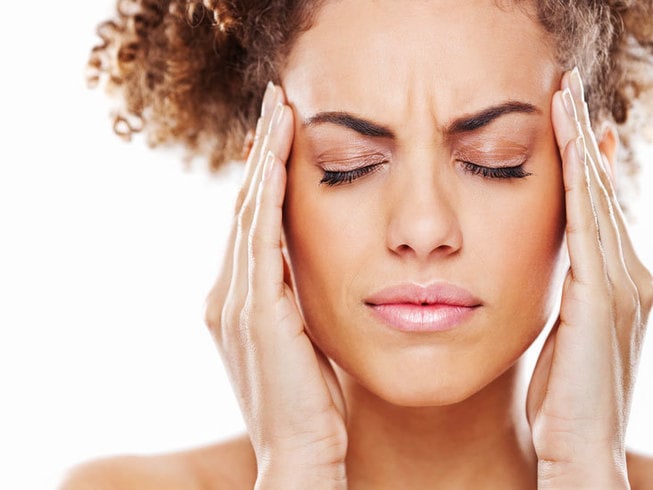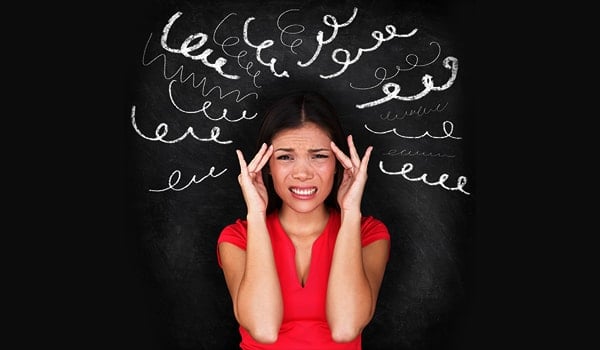Headaches are a common complaint. Their frequency is more these days given the fast pace of living, professional commitments and work-related fears. How many of us know that there is not one headache, but Types of Headaches. With half of the adult population experiencing headache minimum once a year (though the count has gone up majorly), we need to address this problem very soon. But first, let us know the exact meaning of a headache.

Define Headache:
Scientifically, headache is also referred to as cephalgia. According to mayoclinic.org, “Headache is pain in any region of the head. Headaches may occur on one or both sides of the head, be isolated to a certain location, radiate across the head from one point, or have a viselike quality. A headache may appear as a sharp pain, a throbbing sensation or a dull ache. Headaches can develop gradually or suddenly, and may last from less than an hour to several days.”
How Headaches can be classified?
Most of you will be eager to know about headache types. They are generally classified by the cause – so there are ‘primary headaches’ and ‘secondary headaches’. Did you know, there are 150 different types of headaches? OMG!
The most common Headache types are: Tension headaches, cluster headaches, sinus headaches, hormone headaches, caffeine headaches, exertion headaches, hypertension headaches, rebound headaches and post-traumatic headaches. Let us know more about Different kinds of Headaches.
Note please: The first three headache types below are the most common PRIMARY headaches.
1. Tension headache:
This generates mild, diffuse to moderate pain in your head or at the back of your head and neck. How does it make you feel? As if there is a tight band around your head. A tension type
headache is the most common type, yet its causes are not that well understood. It is also called a ‘stress’ headache. If it happens more often, then a tension headache becomes chronic.
Causes: A variety of foods, activities and stress can trigger off tension headaches. Let’s see what they are:
- Insufficient rest
- Depression
- Fatigue
- Poor posture
- Emotional Stress
- Strain in the eyes
- Dry eyes
- Cold or Flu
- Sinus Infection
- Caffeine
- Alcohol
- Smoking
Treatment: Knowing How to cure different headaches is important. Let us see how to treat a tension headache:
- Take OTC medications like Aspirin or Ibuprofen to get rid of tension headache. Avoid taking them occasionally.
- If painkillers are not working, then doctors may prescribe a “muscle relaxant” which helps stop muscle contractions.
- Stress management classes, Acupuncture and “talk therapy” are other treatment methods of tension headache.
- Apply an ice pack on your head for 5 to 10 minutes several times a day.
- Take frequent computer breaks so as to minimize eye strain.
- To give tense muscles some relief, take a hot bath or shower.
- Improve your posture.
- Make a ‘headache’ diary. What’s that? A record of your daily meals/ beverages/ activities/ situations that trigger stress.
2. Cluster Headache:
When you are down with severe burning and piercing pain, then this headache types is known as cluster headache. It occurs around or behind one eye or one side of the face at a time. The side affected by the headache can lead to swelling, redness, sweating and flushing. Nasal congestion can also happen on the same side as the headache. Incidentally, cluster headache is the least in common headaches.
Causes: Here are few cues of the oncoming headache on the affected side-
- Mild burning sensation
- Watering of eyes or redness in them
- Swollen eye
- Runny or congested nose
- Face turning red
Treatment:
- Breathe oxygen through a face mask for 20 minutes.
- Drugs like Triptan may work.
- For those who are not getting a break from cluster headaches, surgery may be an option.
The most common Headache types are: sinus headaches, hormone headaches, caffeine headaches, exertion headaches, hypertension headaches, rebound headaches and post-traumatic headaches.
3. Migraines:
This is an intense pulsing which happens deep from the head. The pain can last for several days, and can hamper daily routine of the affected person. Migraines give a throbbing sensation and are usually one-sided. The patients often turn sensitive to light and sound. Please note – apart from nausea and vomiting, visual disturbances called “aura” (e.g. shimmering lights, flashing lights, blind spots, stars, zigzag lines) are likely to happen in migraine patients. Auras also include tingling sensation on one side of the face or arm and trouble speaking.
Causes: Common migraine triggers are:
- Disruption in sleep
- Meals skipped
- Hormone Fluctuations
- Exposure to chemicals
- Dehydration
- Eating some foods like salty items, aged cheeses, processed foods, wine, oral contraceptives can trigger migraine attack
Treatment:
- OTC pain relievers such as Triptans, Imitrex
- Exercise regularly
- Diet modifications
- Improved sleep habits
- Stress management
Now for the headache types which are the most common SECONDARY headaches.
4. Allergy or Sinus Headache:
Headaches can also happen as a result of allergic reaction. Pain as a result concentrates on your sinus area and in the front part of your head. People who suffer from chronic seasonal allergies (or sinusitis) are likely to suffer more from these kinds of headaches.
Causes:
- Genetic and dietary triggers in women
Treatment:
- Modified diet.
- OTC pain relievers or prescription medicines are there to control this pain.
- Apply ice to the painful area on your head, do relaxation exercise or acupuncture for relief.

Source: healthline.com
6. Caffeine Headache:
Most of us drink caffeine (in the form of tea or coffee) whenever we are down with a headache. Though it helps reduce inflammation and bring relief, it can also cause headaches. This can happen when you have caffeine-based drinks regularly. Shocking to know that caffeine affects blood flow to the brain. Withdrawal from it can trigger a headache. The thumb rule to follow – consume zero to very little caffeine or consume the same amount of caffeine every day.
Causes:
- Excess of caffeine intake in the form of tea or coffee – what we call it as caffeine overdose
- Caffeine withdrawal symptoms
- Caffeine sensitivity
- Caffeine allergy
Treatment:
- Keep your caffeine intake at a moderate level or QUIT IT.
- Drink plenty of water.
- Avoid taking F & B and medications that have added caffeine
- Get the necessary sleep
- Take pain relievers like ibuprofen, aspirin, acetaminophen (as directed by the physician)
7. Exertion Headache:
They happen quickly after intense periods of physical and strenuous activity such as weight lifting, swimming, running, tennis. Also called exercise headaches, they become severe very quickly and can also be a sign of abnormalities in the brain or other diseases.
Causes:
- Sustained or strenuous exercise in hot weather, or at high altitude.
- Family or personal history of migraine
Treatment:
- Anti-inflammatory drugs
- Blood pressure medication
8. Hypertension Headache:
Also called high blood pressure headache, it happens when the BP gets elevated. It is called the silent killer because it doesn’t cause symptoms for many years. Usually occurs on both sides of your head and goes away after the BP gets under control.
Causes:
- Defects in blood vessels
- Certain medications
- Being overweight
- Stress, alcohol and being inactive and sedentary (deskbound)
- Kidney problems
Treatment:
- Eat diet rich in fruits and veggies.
- The food should be low in salt, red meat, fats, sweets and sugared drinks.
- Take medicines based on doctor’s prescription
9. Rebound Headache:
Think Different kinds of Headaches and you can’t miss Rebound headache (also known as medication overuse headache). It can feel like a tension-type headache or sometimes intensely painful like migraine.
Causes:
- More likely to happen if you frequently use OTC pain relievers.
Treatment:
- The best way to cure this Headache types is to slowly stop taking this medication to relieve yourself of pain.
- Although the pain may worsen in the beginning, it will slowly subside in a few days time.
10. Post-traumatic Headache:
This headache types can develop after a head injury of any type. This headache feels like a tension-type or migraine headache and lasts up to 6 months to 1 year after the head injury. It can also become chronic.
Causes: Head injury
Treatment: Triptans, beta-blockers are the general prescriptions to control pain from post-traumatic headache.
Disclaimer:
All contents mentioned here are for informational purpose only, and are not a substitute for professional medical advice, diagnosis or treatment. Consult a qualified doctor, physician or health provider with any questions you may have regarding a medical condition.
How did you find this blog on Types of Headaches? Which headache type have you suffered from? And what is the treatment and medication you took? Do write your replies and comments for sure and share this article with your friends, family members and peer group.
